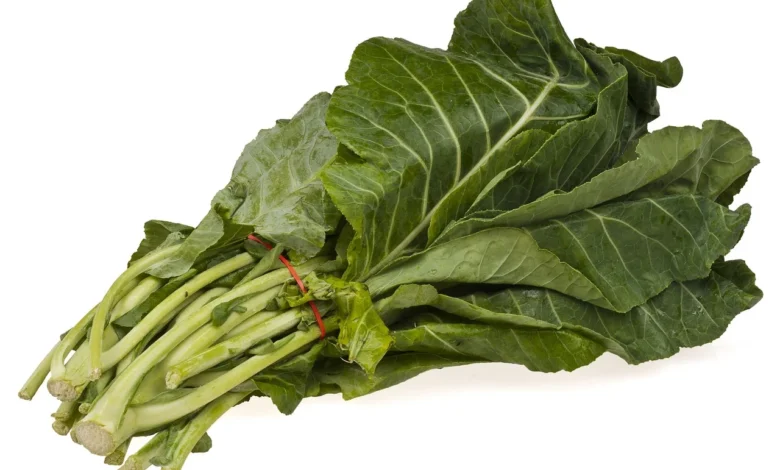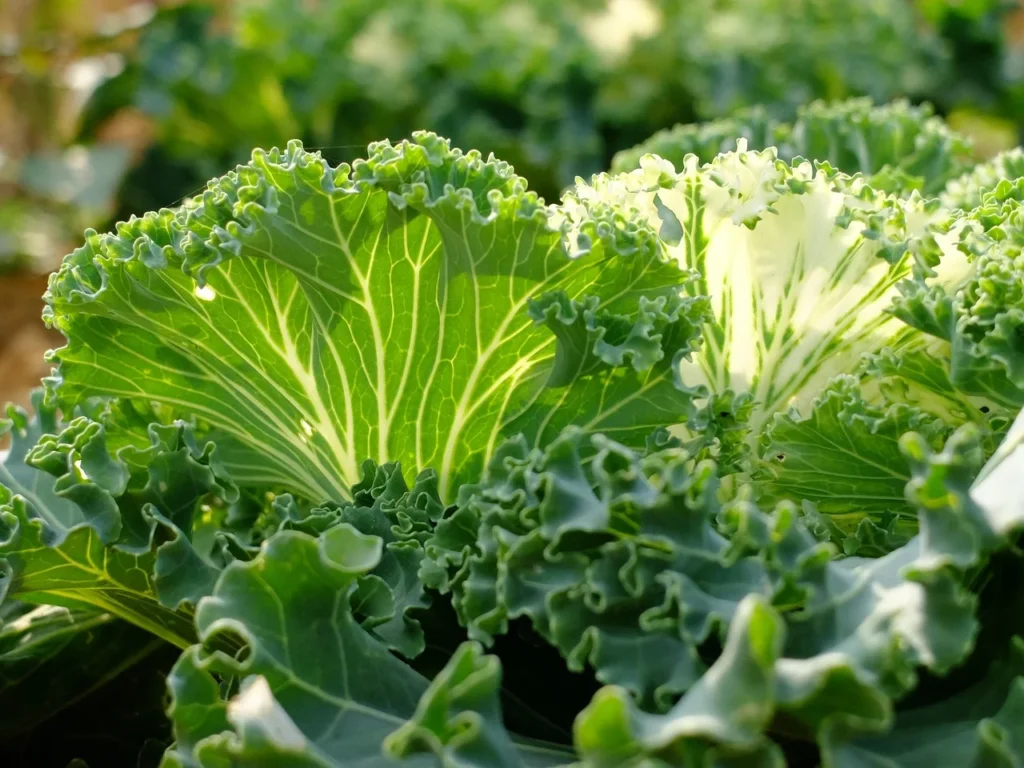Can Dogs Eating Collard Greens?

You want the best for your furry companion—every treat, snack, and meal matters. But when it comes to sharing your plate, questions arise. Are those leafy greens on your dinner table safe for your pup? Let’s explore how a nutrient-packed vegetable like collard greens could fit into their diet—and what precautions you need to take.
Collard greens are rich in vitamins A and K, along with calcium and antioxidants like lutein. These nutrients support vision, bone strength, and overall vitality. However, they also contain oxalates, which can affect digestion if not prepared properly. Boiling them reduces these compounds, making the greens safer for your pet.
While these vegetables offer health benefits, moderation is key. Too much fiber might upset sensitive stomachs. Always consult your veterinarian before introducing new foods. This article will guide you through safe serving sizes, cooking methods, and how to spot potential allergies.
Introduction to Collard Greens and Your Dog’s Diet
Adding variety to your companion’s meals requires understanding which human foods offer nutritional value. Leafy greens like collard greens have gained attention as potential supplements for pets, but their suitability depends on preparation and portion control.
What Are Collard Greens?
Collard greens belong to the cruciferous vegetable family, closely related to kale and broccoli. Originating from the Mediterranean, they became a staple in Southern U.S. cuisine due to their hardiness and nutrient density. These greens contain bioactive compounds like sulforaphane, which studies suggest may support cellular health.
Why Consider Them for Your Pet?
Rich in vitamins A, C, and K, these leafy vegetables can contribute to immune function and bone health when properly prepared. Their fiber content also aids digestion for some animals. However, overfeeding might lead to gastrointestinal upset, particularly in sensitive stomachs.
Pet owners often explore vegetables like collards to diversify meals while prioritizing natural nutrients. Always introduce new foods gradually and consult a veterinarian to ensure alignment with your companion’s unique dietary requirements.
Nutritional Value and Health Benefits of Collard Greens
Choosing nutrient-rich additions to your pet’s bowl can enhance their well-being. Collard greens pack a powerful punch of vitamins and minerals that support your furry friend’s health. Let’s break down how these leafy vegetables contribute to a balanced diet.
Essential Vitamins and Minerals
Collard greens are loaded with vitamin A, which promotes healthy skin and sharp vision. They also provide vitamin C, boosting immunity against infections. A single cup offers over 300% of the daily value for vitamin K, crucial for blood clotting and bone strength.
Calcium in these greens supports strong teeth and joints. The fiber content aids digestion, helping maintain regular bowel movements. For pets with sensitive stomachs, gradual introduction is key to avoiding discomfort.
Antioxidant Support for Vision and Immunity
Lutein and zeaxanthin—two antioxidants in collard greens—filter harmful blue light and protect eye tissues. Studies show these compounds may reduce the risk of age-related vision issues in animals.
These antioxidants also combat free radicals, lowering inflammation. Combined with vitamin C, they create a defense system for your furry friend’s immune health. Adding small portions to meals can offer long-term nutritional benefits without overwhelming their diet.
Understanding the Key Nutrients in Collard Greens
Exploring the nutritional makeup of leafy vegetables reveals why they’re often praised as superfoods. Collard greens stand out due to their unique blend of compounds that work together to support health. Let’s examine two critical elements: bioactive agents and structural nutrients.
Bioactive Compounds and Sulforaphane
Collard greens contain sulforaphane, a sulfur-rich compound studied for its chemopreventive properties. Research from Johns Hopkins University suggests this molecule activates enzymes that neutralize toxins, potentially reducing cellular damage. For pets, this could mean better defense against inflammation and environmental stressors.
These vegetables also offer glucosinolates, which break down into compounds supporting detox pathways. While studies focus on humans, similar mechanisms may benefit animals when integrated moderately into meals.
The Role of Fiber and Calcium
Fiber in these greens acts like a broom for the intestines, promoting regularity and feeding beneficial gut bacteria. A 2021 Journal of Animal Science study found that soluble fiber helps stabilize blood sugar levels—a plus for pets prone to weight issues.
Calcium strengthens bones and aids muscle function. One cup provides about 84 mg, which complements a balanced diet without overloading mineral intake. Pairing calcium-rich foods with vitamin D sources enhances absorption, maximizing benefits.
While packed with nutrients, these vegetables shouldn’t replace primary protein sources. Always balance them with vet-approved meals to avoid digestive issues. Knowing how each component works empowers you to make informed choices for your pet’s plate.
Dogs Eat Collard Greens: Safe Serving Practices

Your pet’s safety starts in the kitchen—knowing how to prepare their food matters just as much as what you serve. Leafy vegetables can boost nutrition when handled correctly, but improper methods might lead to avoidable health risks.
Proper Cooking and Preparation Methods
Always wash leaves thoroughly to remove dirt or pesticides. Chop them into bite-sized pieces to prevent choking, and boil for 5-7 minutes to break down oxalates. This step reduces the risk of calcium-related issues by up to 30%, according to veterinary nutrition studies.
| Nutrient | Raw | Boiled |
|---|---|---|
| Oxalates | High | Low |
| Fiber | 4g per cup | 3.5g per cup |
| Calcium | 84mg | 78mg |
Effective Portion Control and Moderation
Limit portions to 1-2 tablespoons per 20 pounds of body weight daily. Overfeeding fiber-rich foods may cause gas or loose stools. Pair small amounts with lean proteins like chicken or salmon for balanced meals.
Remember: these greens should complement—not replace—your pet’s primary diet. Rotate them with other vet-approved veggies to maintain variety without nutrient overload. When in doubt, consult your veterinarian to tailor servings to your companion’s needs.
Preparing Collard Greens for Your Furry Friend
Transforming leafy greens into a safe snack requires careful preparation. Follow these steps to ensure your companion enjoys their treat without risks like choking or digestive discomfort.
Step-by-Step Cooking Guidelines
Start by rinsing leaves under cold water to remove dirt. Pat them dry, then remove thick stems—these pose a bone safety risk due to their tough texture. Chop leaves into dime-sized pieces for easy chewing.
- Boil water in a pot and add chopped greens.
- Cook for 5-7 minutes to soften fibers and reduce oxalates linked to urinary stones.
- Drain thoroughly and let cool completely before serving.
Avoid seasoning like salt or garlic. These additives can trigger adverse reactions in sensitive pets. Stick to plain, unflavored greens.
Serve no more than 1-2 teaspoons per 10 pounds of body weight initially. Watch for signs of stomach upset, such as vomiting or diarrhea. If tolerated, gradually increase portions as a weekly treat.
Proper preparation ensures your friend reaps the benefits without risks. Always store leftovers in the fridge for up to three days. When in doubt, consult your vet to tailor these guidelines to your pet’s unique needs.
Potential Risks and Sensitivities for Your Dog
While leafy vegetables offer nutritional perks, certain breeds may face challenges digesting them. Understanding these risks helps you balance benefits with safety.
Understanding Oxalates and Antinutrients
Collard greens contain oxalates—natural compounds that bind calcium. In predisposed breeds like Dalmatians or Bulldogs, this may contribute to urinary stones. Cooking reduces oxalate levels by up to 30%, making it a safer way to serve them.
Antinutrients like glucosinolates can interfere with thyroid function if consumed raw. Steaming or boiling neutralizes these compounds. Compared to kale and cabbage, collards have moderate oxalate content but higher calcium absorption potential.
Monitoring for Gastrointestinal Upset
Introduce new foods gradually. Watch for vomiting, diarrhea, or lethargy—common signs of intolerance. Smaller breeds often react more strongly to high-fiber veggies.
Use these tips to minimize risks:
- Start with 1 teaspoon per meal
- Combine with lean proteins
- Track stool consistency for 48 hours
If symptoms persist, switch to lower-fiber options like cooked cabbage. Always consult your vet when adjusting diets—they can recommend the best way to incorporate greens like kale or collards safely.
Comparative Analysis: Collard Greens Versus Other Greens

Not all leafy greens offer the same perks for your pet’s diet—some pack more nutrients while others pose hidden risks. Understanding how collard greens stack up against alternatives like kale and mustard greens helps you make smarter choices.
Comparing Nutritional Profiles
Collard greens contain moderate sulforaphane levels compared to kale, which has higher concentrations. However, they outperform mustard greens in calcium absorption due to lower oxalate content. A 2022 Journal of Agricultural Science study found that cooked collards retain 70% of their antioxidants, rivaling kale’s lutein levels.
| Vegetable | Sulforaphane (mg/100g) | Antioxidants (ORAC score) | Oxalates (mg) |
|---|---|---|---|
| Collard Greens | 45 | 1,300 | 10 |
| Kale | 60 | 1,700 | 20 |
| Mustard Greens | 30 | 900 | 25 |
The benefits collard greens provide include balanced fiber and safer mineral ratios. While kale offers more vitamin C, its higher oxalates may strain sensitive kidneys. Mustard greens, though rich in vitamin K, often trigger digestive discomfort when overfed.
Rotate these vegetables weekly to diversify nutrient intake. Serve collard greens steamed for maximum safety, paired with lean proteins. Always monitor portion sizes—even nutritious options can overwhelm small stomachs.
Expert Advice and Guidelines for Canine Nutrition
Navigating your pet’s nutrition can feel overwhelming, but expert insights simplify the process. Veterinarians and animal nutritionists emphasize tailored approaches to ensure meals meet individual needs. Let’s explore how to align leafy vegetables with professional recommendations for optimal results.
The Importance of Veterinary Consultation
Before adding new foods like collard greens, consult your vet. A 2023 Journal of Veterinary Internal Medicine study found that 15% of pets experience dietary sensitivities requiring customized plans. Breeds prone to kidney issues or thyroid imbalances may need stricter monitoring.
“Every pet’s metabolism differs. What works for one may harm another—always prioritize personalized guidance.”
Dr. Sarah Lin, Board-Certified Veterinary Nutritionist
| Recommendation | Expert Guideline | Common Mistake |
|---|---|---|
| Portion Size | 1 tsp per 10 lbs body weight | Overfeeding, causing diarrhea |
| Cooking Method | Steamed or boiled | Serving raw, risking antinutrient exposure |
| Frequency | 2-3 times weekly | Daily servings, leading to mineral buildup |
Integrating Greens into a Balanced Diet
Leafy vegetables should complement—not replace—core proteins. Start with tiny amounts mixed into regular meals. Track reactions for 48 hours, adjusting based on stool quality or energy levels.
Pair greens with omega-rich fish or lean meats to enhance nutrient absorption. Rotate options like spinach or bok choy to diversify vitamins without overloading oxalates. Balance is key—too much fiber can disrupt digestion, while too little negates health benefits.
Follow these steps for safe integration:
- Consult your vet to rule out breed-specific risks
- Prepare greens by boiling and chopping finely
- Mix 1-2 teaspoons into meals twice weekly
Related post: Can Dogs Eat Cherries?
Conclusion
Balancing your pet’s diet with healthy additions requires knowledge and care. Collard greens offer vitamins A and K, antioxidants, and fiber, which can boost immunity and digestion. When prepared safely—boiled and chopped—they become a nutritious supplement for your furry friend.
Moderation is critical. Overfeeding may lead to stomach discomfort or urinary concerns. Stick to small portions, ideally mixed with their regular meals. Always prioritize vet guidance to address breed-specific risks or allergies.
These greens can be a smart choice when handled thoughtfully. By cooking properly and monitoring reactions, you provide a tasty, nutrient-rich treat. Remember: every pet’s needs differ. Consult your veterinarian to ensure this addition aligns with their health goals.
FAQ
Are collard greens safe for pets?
Yes, when prepared properly. Always cook them to break down tough fibers and serve in small amounts to avoid digestive issues. Avoid seasoning or oils.
What vitamins do these leafy vegetables provide?
They’re rich in vitamins A, C, and K, which support vision, immunity, and bone health. They also contain calcium and fiber for overall wellness.
Can feeding greens cause stomach problems?
Overfeeding may lead to gas or bloating. Introduce them gradually and monitor your pet’s reaction. Consult a vet if vomiting or diarrhea occurs.
How do they compare to spinach or kale?
They’re lower in oxalates than spinach, reducing kidney stone risk. Compared to kale, they offer similar nutrients but may be gentler on sensitive stomachs.
Should I worry about antinutrients in these greens?
Cooking reduces compounds like oxalates and glucosinolates. Steaming or boiling ensures they’re easier to digest while preserving most benefits.
How much can I add to my pet’s meals?
Treat them as a supplement, not a main dish. For small breeds, a teaspoon-sized portion weekly works. Larger pets can handle up to a tablespoon.
Are raw leaves okay for furry companions?
Raw greens are hard to digest and may cause choking. Lightly cooking softens the texture and improves nutrient absorption while minimizing risks.
Can these veggies replace commercial dog food?
No. They lack complete nutrition pets need. Use them as occasional additions to a balanced diet approved by your veterinarian.




